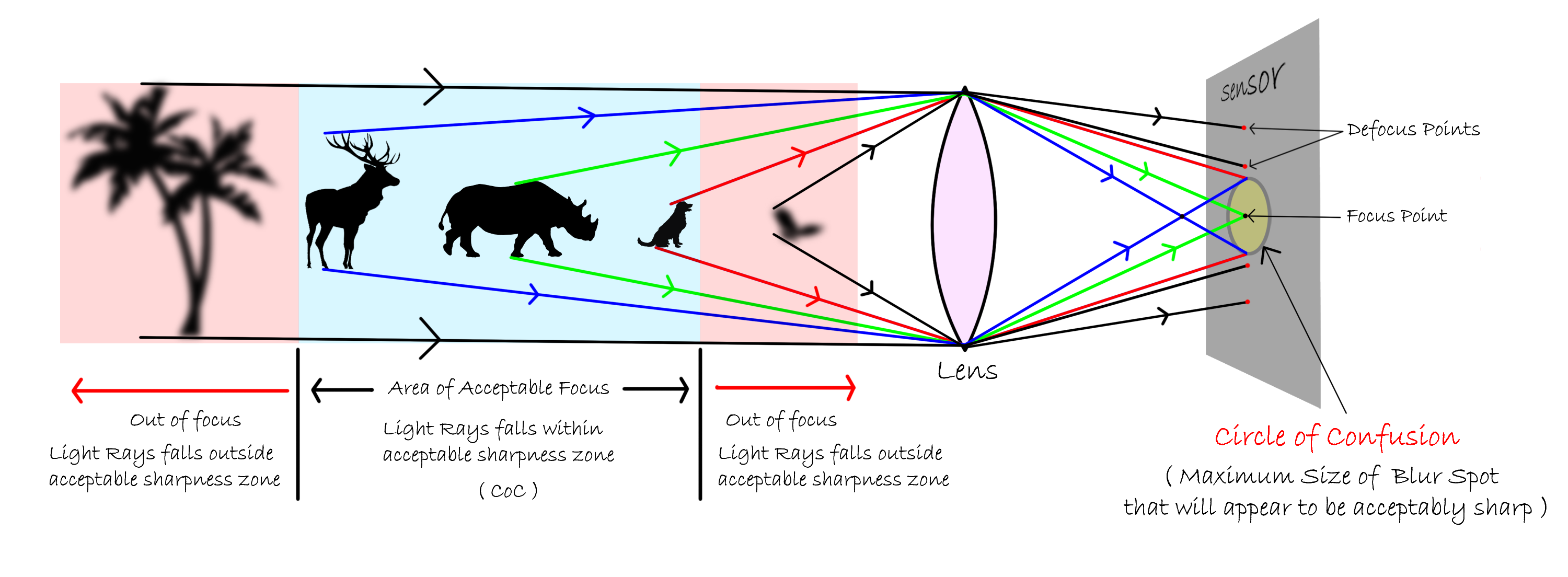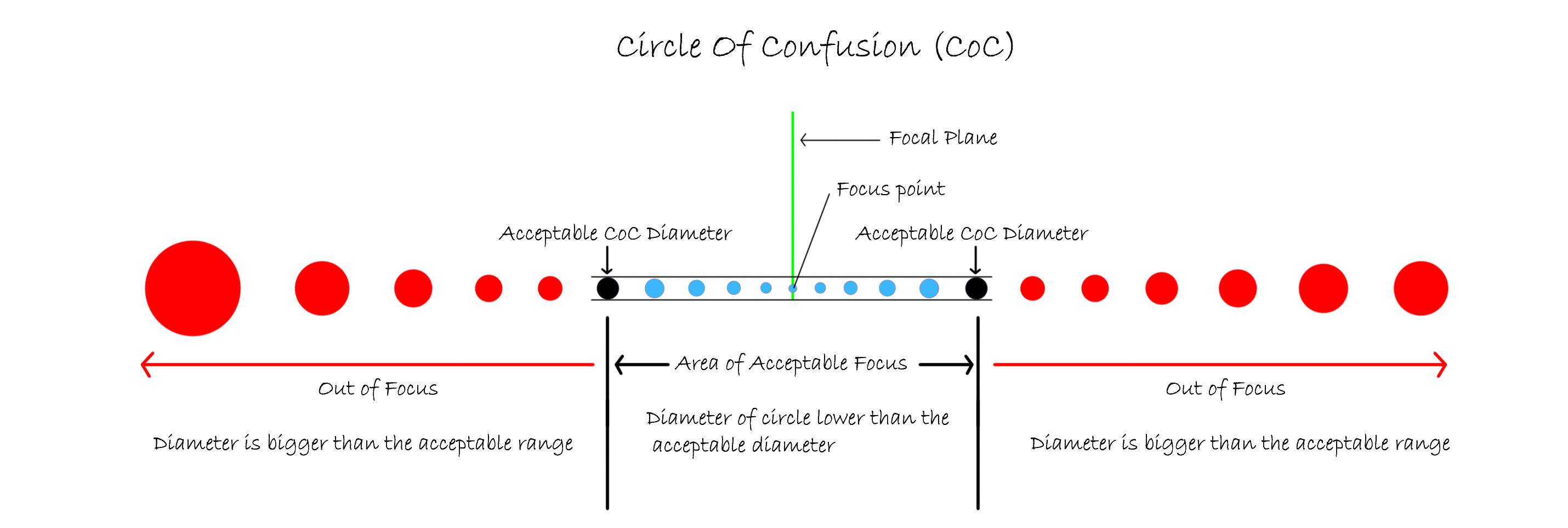
Circle Of Confusion
Circle of Confusion (CoC), is one of the most confusing topics for photographers. In this topic I am going to discuss a few technical concepts, so please bear with me. I will try to simplify this concept as much as I can so that you all can understand clearly.
In my Depth of Field article, I have explained the concept of “Area of Acceptable Focus”. In the simplest form you can think “Circle of Confusion” as a boundary where the “Area of Acceptable Focus” ends and the Defocus area starts.
To understand the concept technically, first we have to understand how camera and lens works. When we focus on a subject, the light travels from the subject in a cone-like manner and converge at a certain point inside the camera sensor. However, camera can only resolve lights that converged at one distance to the Focal Plane (inside the camera it is camera sensor). But when light convergence doesn’t fall exactly on the focal plane (inside the camera it is camera sensor) creates a circle of light or blur spot. When this blurred spot is small enough, we see it as a point in the image and it appears to be in focus. So we say that area is “Acceptably Sharp”. These blur spots become bigger as it converges further from the focal plane. And when this blurred spot surpasses a certain size, it appears to be out of focus to us. The maximum size of a blur spot that will appear to be “Acceptably Sharp” in the final image is called “Circle of Confusion”(CoC). Any blur spot larger than the accepted CoC will appear to be out of focus.
Let’s understand this concept again from a different perspective :
Here we will represent the same concept with the help of Circle.
We already know that camera can only focus sharply at a single point (Focus Point) on Focal Plane. As we move away( in front of and behind) the Focal Plane, the point becomes bigger and takes the form of circle . When this circle is small enough, we see it as a point in the image and it appears to be in focus. So we say that area is “Acceptably Sharp”. But when this circle surpasses a certain size, it appears to be out of focus to us. The maximum size of a circle that will appear to be “Acceptably Sharp” in the final image is called “Circle of Confusion”(CoC). Any circle larger than the accepted CoC will appear to be out of focus.
Now, we can say that “Area of Acceptable Focus” is based on Circle of Confusion (CoC).
So the obvious question will be “How do I control CoC in my camera ?”
The answer is you can’t control CoC in your camera. Circle of Confusion (CoC) is a Concept. It is hard to visualize. It’s something that you cannot touch with your hands nor see with your own eyes.
So, what is the Diameter of this Circle?
Well, that is where some of the confusion begins. The Circle of Confusion is just a number, it is based on perception – it is not something that can be calculated precisely. The main purpose of the circle of confusion is to somehow measure how big the blur spot needs to be before it is deemed out of focus. This, in turn, helps us determine the amount of “Depth of Field”.
Unfortunately, the “Depth of Field” is subjective and the “Acceptable Sharpness” varies based on different factors.
These factors are:
- The viewing distance.
- Enlargement from the original image
- Visual acuity
1. The viewing distance :
The distance from which your final image will be viewed. The closer we are to the image we view, the more likely we are to perceive a blur spot as a blur spot and not a singular point.
2. Enlargement from the original image :
The enlargement of the final image from the original. The original here is the image on your actual sensor. If you’re shooting a “full frame” camera, your original image is 24 mm by 36 mm. Any final production of your image beyond that is technically an enlargement.
3. Visual acuity :
The visual acuity of the person viewing the image. We have no real control over this last factor, but we have some idea of what is normal. A person with a 20/20 vision will need a smaller circle than those with poorer eyesight. Therefore, people with better vision have smaller depth of field.
Conclusion :
As you’ve already seen, defining depth-of-field may be a fairly arbitrary affair. The “Area of Acceptable Focus” or “Depth of Field” may be a subjective term. What could be acceptably sharp or focused to at least one viewer could be horribly blurry to a different . Because we’ve already seen it depends on several factors. How good is your eyesight? And what distance are you viewing from? With perfect vision, under ideal lighting, and at a traditional reading distance a circle of confusion could be as small as 0.06mm. But these conditions are far too strict for the important world and a figure of around 0.030 mm for full frame and 0.017mm for crop sensor are employed in photography as the value of CoC. It’s value isn’t supported by any principles or rules, it’s just a convention.




